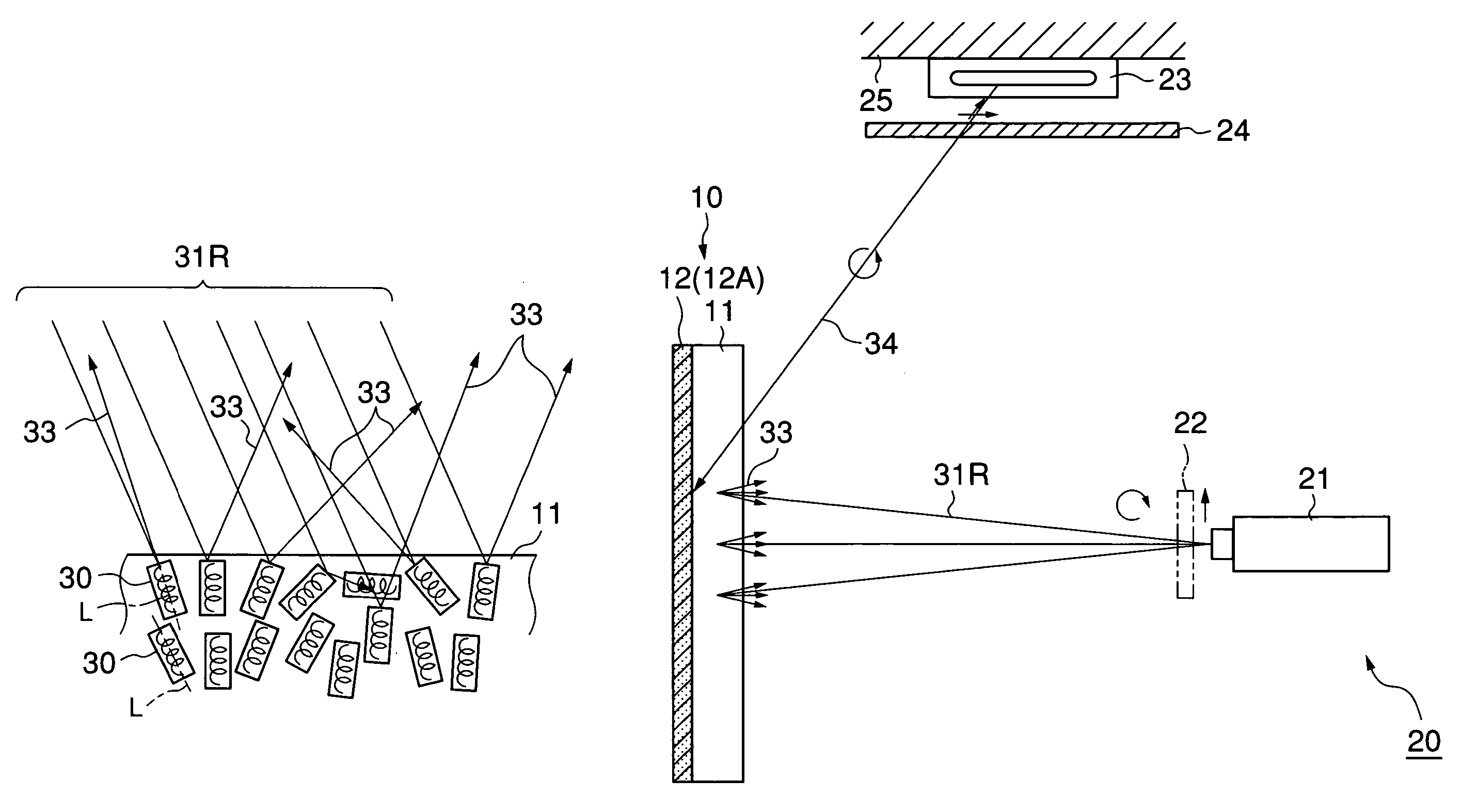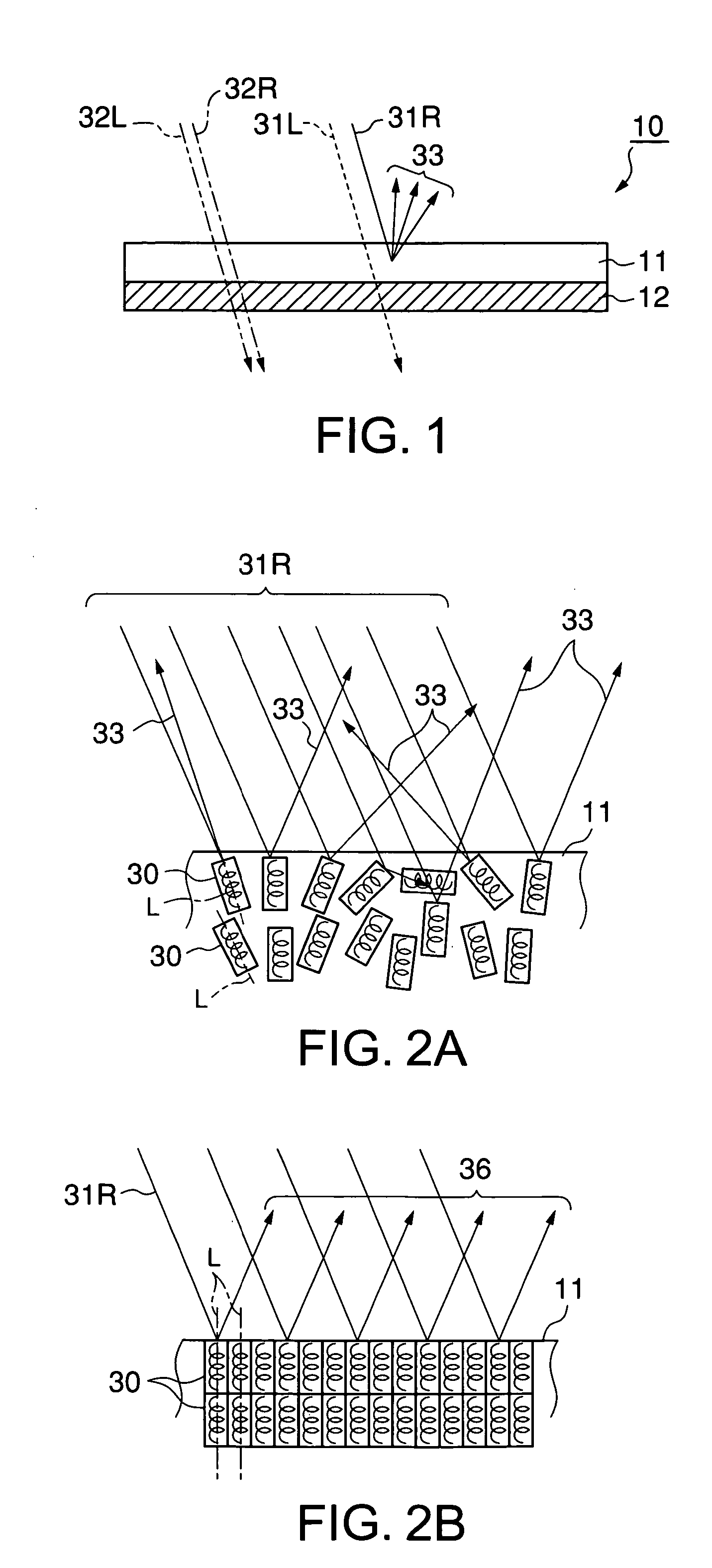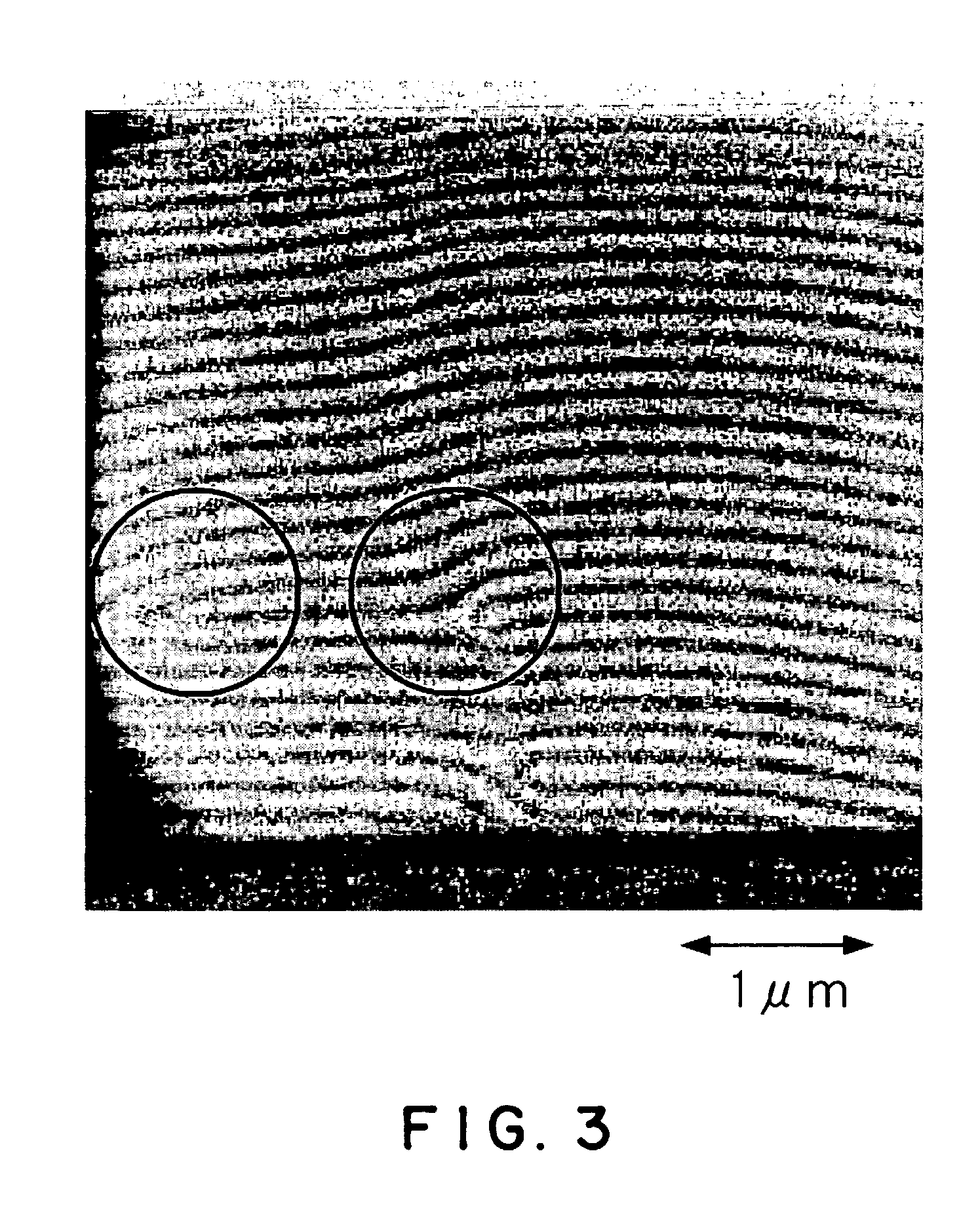Projection screen and projection system containing same
- Summary
- Abstract
- Description
- Claims
- Application Information
AI Technical Summary
Benefits of technology
Problems solved by technology
Method used
Image
Examples
example 1
[0209]A first cholesteric liquid crystal solution having a selective reflection wave range centered at 440 nm was prepared by dissolving, in cyclohexanone, a monomer-containing liquid crystal consisting of a main component (94.7% by weight), an ultraviolet-curing nematic liquid crystal, and a polymerizable chiral agent (5.3% by weight). A liquid crystal containing a compound represented by the above chemical formula (2-xi) was used as the nematic liquid crystal. A compound represented by the above chemical formula (5) was used as the polymerizable chiral agent. To the first cholesteric liquid crystal solution, 5% by weight of “Irg 369” available from Ciba Specialty Chemicals K.K., Japan was added as a photopolymerization initiator.
[0210]By a bar coating method, the above-prepared first cholesteric liquid crystal solution was applied to a substrate (“LUMIRROR / AC-X” manufactured by Panac Co., Ltd., Japan) that was a black-colored PET film with a surface area of 200 mm×200 mm, having t...
example 2
[0218]“ADEKA Optomer KRX-559-7” manufactured by ASAHI DENKA KOGYO K.K., Japan was prepared as a material for forming a hard coat layer, and was applied, by a bar coating method, directly to the polarized-light selective reflection layer in the projection screen obtained in Example 1. This coating film was dried at 80° C. for 5 minutes and was then cured by the application of 750 mJ / cm2 of ultraviolet light, thereby forming a hard coat layer with a thickness of 5 μm. There was thus obtained a projection screen containing the hard coat layer laminated to the polarized-light selective reflection layer. The surface hardness of the hard coat layer in the projection screen obtained in this manner was measured. As a result, the pencil hardness of the hard coat layer determined in accordance with JIS K5400 was found to be 2H or more.
example 3
[0219]“ZR-100 (trade name)” manufactured by Sumitomo Osaka Cement Co., Ltd., Japan was prepared as a material for forming an ultraviolet-absorbing layer, and was applied, by a spin coating method, directly to the polarized-light selective reflection layer in the projection screen obtained in Example 1. This coating film was dried at 80° C. for 1 minute, thereby obtaining an ultraviolet-absorbing layer whose thickness was approximately 2 μm. Thus, there was obtained a projection screen in which the ultraviolet-absorbing layer was laminated to the polarized-light selective reflection layer.
PUM
 Login to View More
Login to View More Abstract
Description
Claims
Application Information
 Login to View More
Login to View More - R&D
- Intellectual Property
- Life Sciences
- Materials
- Tech Scout
- Unparalleled Data Quality
- Higher Quality Content
- 60% Fewer Hallucinations
Browse by: Latest US Patents, China's latest patents, Technical Efficacy Thesaurus, Application Domain, Technology Topic, Popular Technical Reports.
© 2025 PatSnap. All rights reserved.Legal|Privacy policy|Modern Slavery Act Transparency Statement|Sitemap|About US| Contact US: help@patsnap.com



